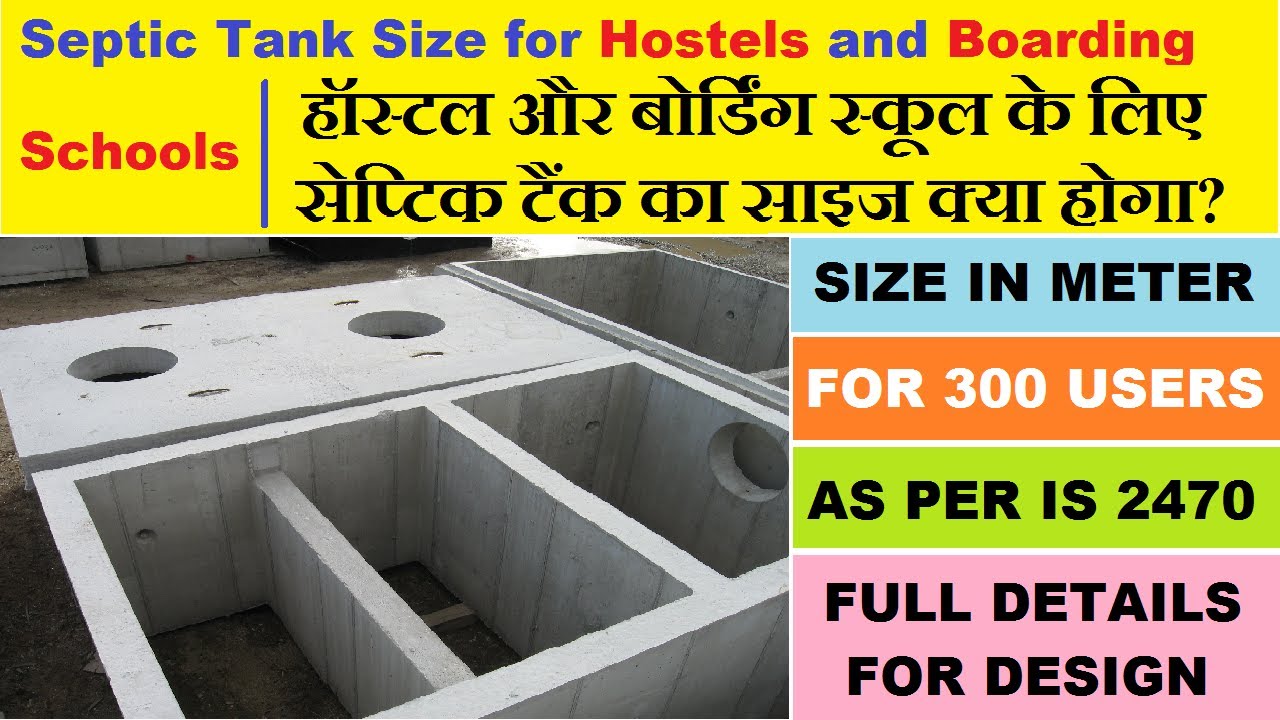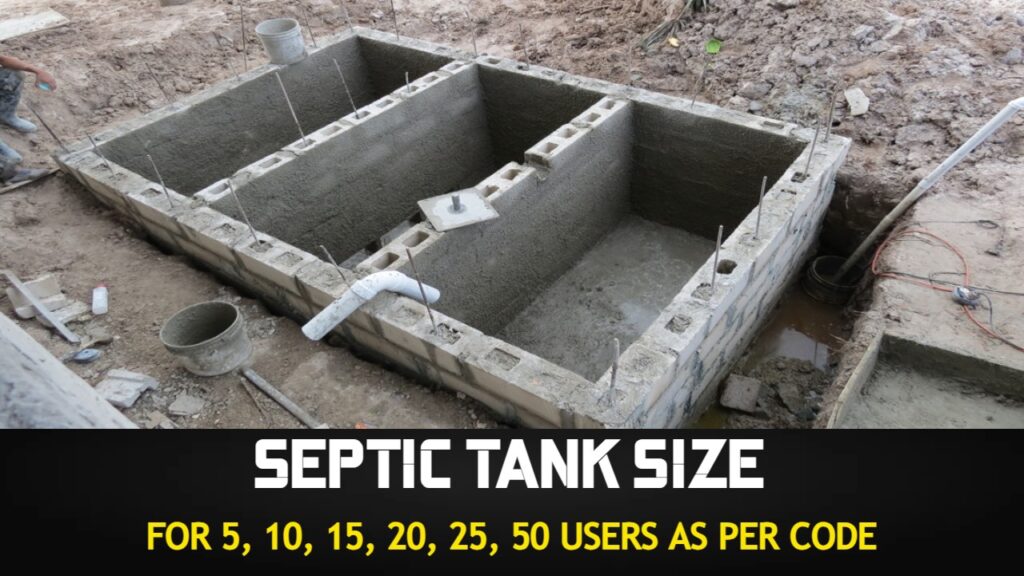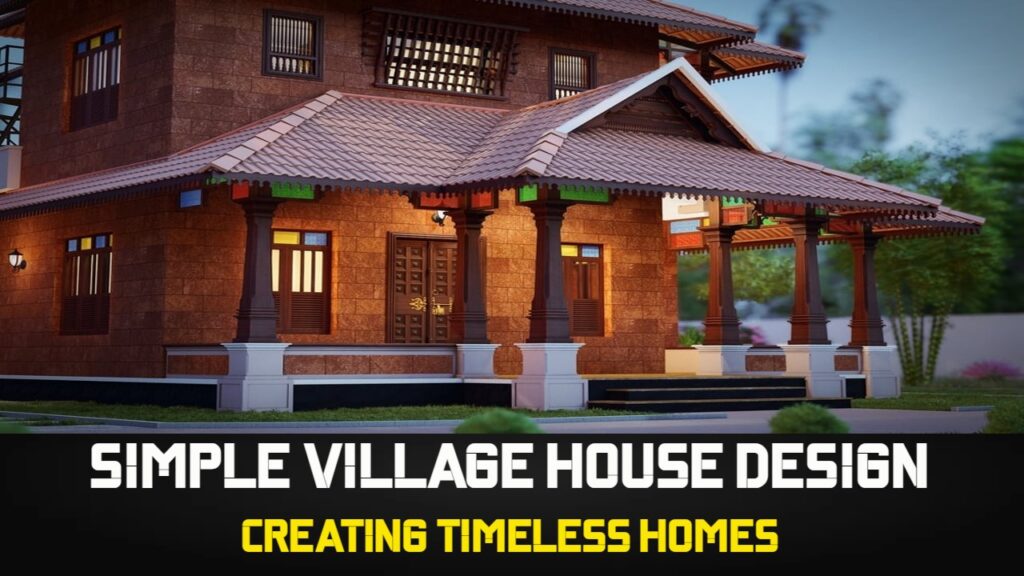In places without centralized sewer lines, septic tanks are an essential component of wastewater management systems. They offer a secure and effective method for handling and getting rid of domestic wastewater produced by homes, businesses, and other enterprises.
The effluent from toilets, sinks, showers, and other plumbing fixtures is collected in a septic tank, which is a large, underground container composed of concrete, fiberglass, or plastic.
Contents
- 1 Advantages of Circular Septic Tank
- 2 Disadvantages of Circular Septic Tank
- 3 Septic Tank Size for Hostels and Boarding Schools as per IS Code 2470
- 4 REFERENCE VIDEO
- 5 FAQ
- 5.1 What is a septic tank?
- 5.2 How does a septic tank work?
- 5.3 How often should a septic tank be pumped?
- 5.4 What are the signs that a septic tank needs pumping?
- 5.5 Can I use additives to maintain my septic tank?
- 5.6 How can I maintain a healthy septic tank system?
- 5.7 What should I do if my septic tank has a problem?
- 5.8 Can a septic tank system handle garbage disposals?
- 5.9 Can I plant trees or shrubs near my septic tank or drain field?
Advantages of Circular Septic Tank
Septic tanks have a number of benefits over other forms, including:
- Cost-effective: Installing a septic tank is often less expensive than utilizing a centralized sewer system. They do away with the requirement for regular maintenance costs and monthly sewage payments connected with a public sewer system.
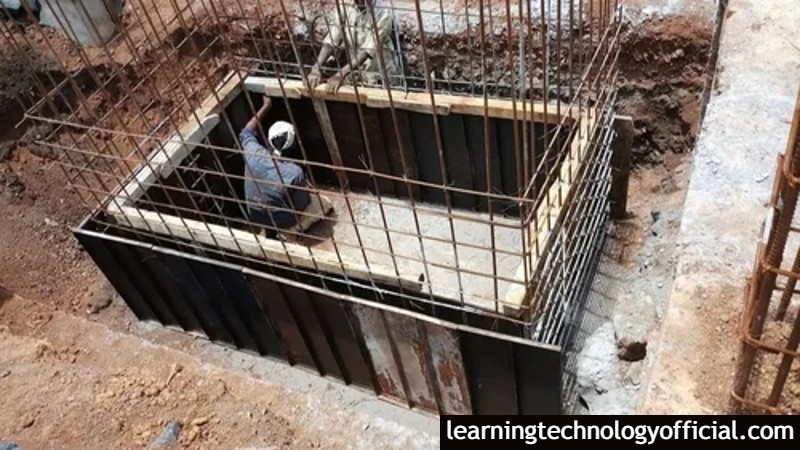
- Independence: Septic tanks offer independence from centralized sewer systems, which makes them ideal for rural and distant locations where sewer infrastructure might not be present. They let homeowners control the treatment of their wastewater on-site.
- Environmental-friendly: Septic tanks handle wastewater treatment naturally and locally. While the effluent is further treated in the drain field, where it percolates through the soil, undergoing filtering and biological treatment, the anaerobic digestion process inside the tank breaks down solids. This procedure can assist in lowering the possible water body pollution in the area.
- Flexibility in Design: To fit diverse property sizes and family demands, septic tanks are available in a variety of shapes and sizes. They may be built and set up to meet particular needs, guaranteeing effective and dependable wastewater treatment.
Disadvantages of Circular Septic Tank
Circular septic tanks offer several disadvantages over other shapes, including:
- Regular Maintenance: Regular maintenance for septic tanks includes occasional pumping to remove accumulated sediments. Failure of the system, sewage backups, and significant health risks might result from neglecting maintenance. The system must be inspected and pumped on a regular basis to maintain optimal operation.
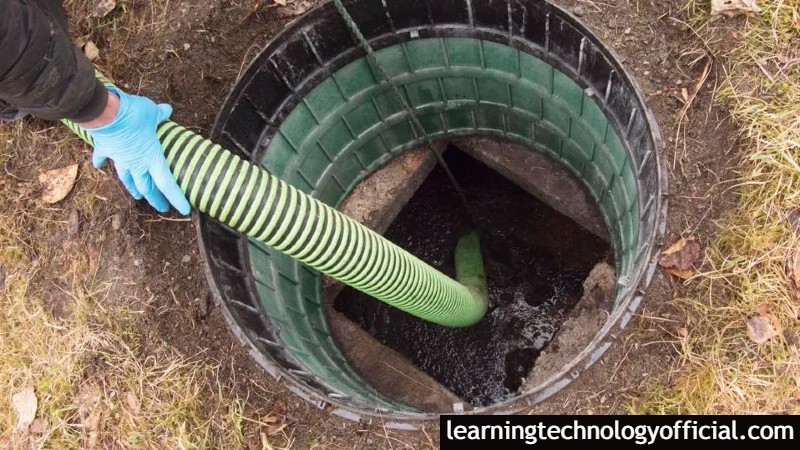
- Potential for Malfunctions: Septic tanks are susceptible to problems including blockages, leaks, or broken parts. These problems may obstruct treatment and result in backlog or odors. It can be necessary to seek expert assistance while troubleshooting and fixing septic tank issues.
- Limitations on Water Usage: Septic systems feature water consumption restrictions to prevent overfilling the tank and drainfield. Excessive water use, such as using several water-hungry appliances at once, can tax the system and reduce its effectiveness.
- Land Requirements: Septic tanks need adequate land space to be installed in order to accommodate the tank and drainfield. The viability and efficiency of a septic system can be impacted by the size of the property and the soil composition. Alternative wastewater treatment techniques may need to be taken into account in locations with limited space or inadequate soil.
- Environmental Impact: Septic tanks that aren’t properly maintained or aren’t working properly can be hazardous to the environment and to people’s health. Untreated wastewater toxins might seep into the groundwater or surrounding bodies of water if the tank breaks or overflows, thereby causing water pollution.
The more vital water is to our existence, the more crucial it is to remove contaminated water from the home. When a structure is being constructed, this filthy water drain is crucial.
In the past, feces were dumped on people’s heads and unclean water poured down open drains, but today, flush latrines and ground drains handle all of this job, which is crucial for environmental purity and human health. However, the majority of the village’s villages and small towns still lack sewage facilities. According to IS Code 2470, the size of septic tanks for hostels and boarding schools
The people of these villages and small towns build septic tanks in their homes to make up for the lack of sewage systems and utilize any amenity that has a sewerage system.
Septic Tank Size for Hostels and Boarding Schools as per IS Code 2470
No. of Users | Length (meter) | Breadth (meter) | Liquid Depth in meter (Cleaning Interval of) | |
| 1 year | 2 year | |||
| 50 | 5.0 | 1.6 | 1.3 | 1.4 |
| 100 | 5.7 | 2.1 | 1.4 | 1.7 |
| 150 | 7.7 | 2.4 | 1.4 | 1.7 |
| 200 | 8.9 | 2.7 | 1.4 | 1.7 |
| 300 | 10.7 | 3.3 | 1.4 | 1.7 |
- NOTE 1 – A provision of 300 mm should be made for the freeboard.
- NOTE 2 – The sizes of the septic tank are based on certain assumptions (check clause 3.4) while choosing the size of the septic tank, the exact calculation shall be made.
- NOTE 3 – For a population over 100, the tank may be divided into independent
- parallel chambers for ease of maintenance and cleaning.
The septic tank is an important tank built below the ground of the RCC or brick wall. The roof of which is also made of RCC (Reinforced cement concrete). The septic tank is plastered with cement spices containing waterproof powder from the inside.
In this, the stools of all the toilets latrines, etc. are collected by the sewerage drainage pipe which in the presence of anaerobic bacteria. Harmful and contaminated gases go into the atmosphere by air (vent) pipes, and liquids are pumped through a drainage pipe into a soakage pit or drain containing unwanted wastewater.
Small particles of solid matter accumulate below the septic tank, which is cleaned after about two years. This whole process takes about 24 hours to complete. That is why it is important that the size of the septic tank should be like that the stool must remain in the tank for 24 hours to complete the chemical reaction.
The tank should have a capacity of 350 liters per person and in any case, its capacity should not be less than 2000 liters. On top of this, a manhole is also made, whose size is 50 to 60 cm in diameter when it is circular and 60 x 45 cm when it is rectangular so that there is no problem while cleaning.
ALSO READ:
- Circular Septic Tank – Volume Calculation in 2 Easy Steps
- Recommended size of Septic Tanks for 20 Users as per IS 2470 (PART-1)
- Septic Tank Capacity and Dimension for up to 15 Users
- Basic Important points to remember before Septic Tank design
- What is Septic tank, Effluent, Scum, Sewage, Detention Tank, Aerobic and Anaerobic Bacteria
REFERENCE VIDEO
If you want detailed knowledge, then watch this Reference video on YouTube Channel: Learning Civil Technology. Because many important points have been covered during the making of the video, so Must Watch. The link is given below:
SOURCE: LEARNING CIVIL TECHNOLOGY
You can also follow me on Instagram, Telegram, and Facebook page. Because of many small things, which are very important from an interview point of view, it is not possible to put them here, I put all that on Instagram, Telegram, and Facebook page. You can take it from there. You will find the links to all social media below.
INSTAGRAM | TELEGRAM | FACEBOOK PAGE
SHARE THIS POST, IF YOU LIKE IT !! THANKS
FAQ
What is a septic tank?
A septic tank is an underground wastewater treatment system commonly used in areas where centralized sewer systems are not available. It is a large, watertight container made of concrete, fiberglass, or plastic that receives and treats wastewater from households and buildings.
How does a septic tank work?
A tank works by allowing solid waste and wastewater to separate. When wastewater enters the tank, the solids settle to the bottom forming sludge, while grease and lighter materials float to the top creating a scum layer. The liquid, known as effluent, remains in the middle and flows out of the tank into the drain field for further treatment in the soil.
How often should a septic tank be pumped?
The frequency of tank pumping depends on several factors, such as the tank size, the number of occupants in the household, and the amount of wastewater generated. As a general guideline, it is recommended to have a septic pumped every 3 to 5 years. However, it’s best to consult a professional to assess your specific situation and determine the ideal pumping schedule.
What are the signs that a septic tank needs pumping?
Some signs that indicate a septic tank may need pumping include slow drains, gurgling sounds in plumbing fixtures, foul odors around the drain field or septic tank area, sewage backups, or lush and green grass over the drain field. If you notice any of these signs, it’s advisable to contact a septic professional to inspect the system.
Can I use additives to maintain my septic tank?
It is generally not necessary to use additives in a well-maintained septic system. Tanks naturally contain bacteria that break down solids. However, if you are experiencing issues with your septic system, such as excessive sludge or odors, there are bacterial and enzyme-based additives available that might help. It’s best to consult a professional before using any additives to ensure they are appropriate for your system.
How can I maintain a healthy septic tank system?
To maintain a healthy tank system, consider the following tips:
1. Regularly pump and inspect the septic tank.
2. Avoid excessive water usage and spread out laundry and dishwashing loads.
3. Dispose of household chemicals properly and avoid flushing non-biodegradable items.
4. Do not pour cooking oils, grease, or harsh chemicals down the drain.
5. Be cautious about what you flush down the toilet.
6. Direct rainwater away from the drain field to prevent oversaturation.
7. Avoid parking or building structures over the drain field.
What should I do if my septic tank has a problem?
If you suspect a problem with your septic, it is best to contact a professional septic service company. They have the expertise to diagnose the issue and recommend appropriate solutions. Attempting to repair or troubleshoot the septic system yourself can be hazardous and may lead to further damage.
Can a septic tank system handle garbage disposals?
Garbage disposals can put an additional strain on a tank system as they increase the amount of solid waste and organic matter entering the tank. If you have a tank, it is generally recommended to minimize the use of garbage disposals or use them sparingly to prevent overloading the system. Proper disposal of food waste in the regular trash is preferable.
Can I plant trees or shrubs near my septic tank or drain field?
Planting trees or shrubs near a tank or drain field is generally not recommended. The roots of trees and shrubs can cause damage to the septic system by infiltrating the pipes, clogging them, and potentially causing structural issues.
